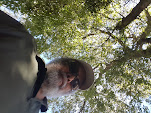
My first camera was a Yashica 35mm with screw in lens. I had a wide angle, normal lens, a medium telephoto and only an idea what it could do. My first roll of film was a complete disaster. I’d done some photos of a party we were having and I got the chemicals mixed up. But from failure we learn no matter how slowly. I started shooting trains and other landmarks around the city to varying degree of success. But slowly I was learning what to do and how to handle the camera. When I began shooting girls I thought I’d die and gone to heaven.
I started with a girl name Marsha who I knew from high-school and she was a babe. Long blonde hair and a figure graced by the heavens. That first shoot I was so nervous I almost dropped the damn lens as I was screwing it in. I pause to let my nerves collect and to cover I made out that I was thinking. I got to take Marsha to two or three sites including a grave yard and an abandoned house. All told we spent about three or four hours together and I got to know her pretty well not that we were great friends or anything. But I was learning to deal with personalities and how to work with her to get something I was proud of. It was only later when I was in the darkroom and got my first print that I realized how pretty she was. I found out much later that she had married her high-school sweetheart and had tragically die in a car accident.
I also shot with a girl named Michael Ann, boy was I smitten with her. We shot roll after roll one afternoon at an abandoned hotel from the twenty’s. A spiral staircase and some little house’s on the property. I look at some of the shots now and they have such a dated look and feel. No nude of course, the sexual revolution hadn’t happened yet just really lovely innocent stuff . I loved that background I was using, an old hotel that was limestone with many small rooms and big corridors. I had shown my mother where I was working and she found out who the property owner was and I got permission to use the place. That really helped because when the police came to check I was allowed to be there. I use the ground for all they were worth and I spent a lot of time and film there.
But working with these girls I found my calling, I found my passion to create beautiful representations of each girl. To be able to craft each young women into a two dimensional work of art that captured their personalities, hopes and dreams. And in retrospect I was laying the ground work for the me I was to become as a man and photographer. I was learning a lot about me working with these girls. I used that knowledge to bridge the gap between photographer and subject. To be able to draw the best out of them and then coaxes it onto paper and have people wonder if they knew the person. That’s what I love the gratification of the viewer to be able to connect with the person I photographed. It’s a skill that involves so many talents and so much time to develop. I don’t feel just because your camera allows you to get a perfectly exposed image that your job is done.
It’s that joy that I get working with a subject in all their imperfections with all their follies and foibles on display. Getting that subject to relax and to begin to have some trust in my skill and me as a person. To get that person to open up literally and figuratively speaking, to flower as a human being. Then I have to have the skills to capture that moment in time to perfection and to reproduce it in print. That is the talent of the photographer, to record that personality so that you feel that you’d like to know the subject better. The real skill is being able to do it so seamlessly it seems like play and not the hard work that it is. It’s that ability that allows the model the room to create and add to the image you both create.

3 comments:
To be able to draw the best out of them and then coaxes it onto paper and have people wonder if they knew the person.
IMO, this is the main element that makes an outstanding portrait photographer. And you do it so well! As you say, you have found your calling - both your own feelings and those of the model are reflected in the emotional impact of your work.
"To be able to draw the best out of them and then coaxes it onto paper and have people wonder if they knew the person."
And you do this so well! As you say, this is quite obviously your calling. All of your images leave me wondering about the personality of the woman, as well as what she was thinking. Great work, Michael! You are an excellent portrait photographer :-)
For me, all it takes to get the real person on film is a nun's chair. But you have to shoot a wild child to get by with something as simple as that.
Post a Comment